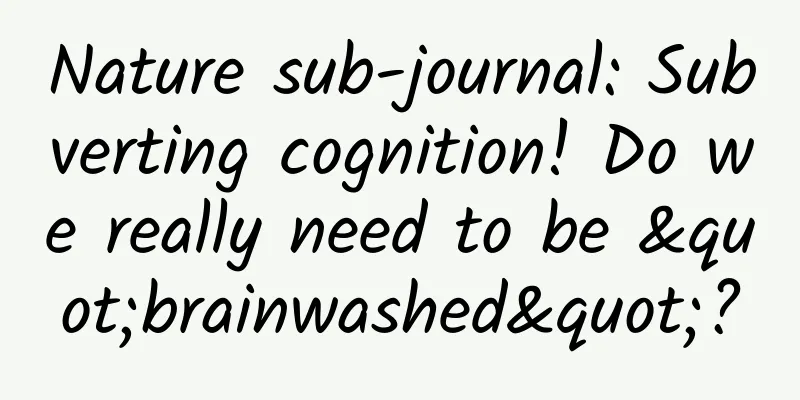Why is the speed of light exactly 299792458 meters per second, neither more nor less?

|
Whether you are a professional physicist or not, the theory of relativity is a popular topic of conversation. However, we often overlook the experimental history behind the constant of the speed of light - it has a long story before the birth of the theory of relativity; and the development of physics is often preceded by experiments. This article is an introduction written by the author of the book "Speed of Light: From the Collapse of Geocentrism to the Birth of Relativity". Written by Xu Xiao People are always curious about why the speed of light in a vacuum is 299,792,458 meters per second. Since this is not a simple number and seems to be an experimental value, why does it not even have a decimal point? Is it really that precise? "Physics is historical." The detection and determination of the speed of light is the best footnote to this statement. 1 Although the great ancient Greek engineer Hero of Alexandria once proposed that light travels incredibly fast, his idea of how fast light is remained at the conjecture stage due to the lack of corresponding experimental conditions. For humanity to determine the speed of light for the first time, a series of technical prerequisites and prior measurement results were required. First, the clock. In 1584, Jost Bürgi made a clock for Tycho Brahe. He used a cross escapement, which greatly improved the accuracy of timing. This enabled Tycho to obtain the most accurate astronomical observations at the time. At that time, determining longitude during navigation through time was an important goal of people. This goal became a huge source of progress in clock technology. The second is observation technology, that is, the emergence of the telescope. In 1611, Galileo Galilei pointed his telescope at Jupiter and observed changes in Jupiter's satellites; in particular, eclipses of Io always occurred every 42.3 hours. This also meant that Galileo had discovered a natural clock in the sky. The second is the measurement and calculation of astronomical data. In the 1660s and 1680s, Giovanni Cassini used Galileo's discovery and other astronomical knowledge to determine the distance from Mars to the Earth and calculate the orbital sizes of the planets in the entire solar system. It was precisely because of these preliminary conditions that humans had the opportunity to estimate the speed of light for the first time. As Cassini's assistant, Ole Rømer observed the eclipses of Io for a long time and found that its period was not fixed. He used the assumption that the speed of light was limited to explain this uncertainty. Christiaan Huygens estimated the speed of light to be 220,000 kilometers per second based on Rømer's data and the relative distance between Jupiter and the Earth at different times. Although this data is quite inaccurate, from the perspective of physical experiments, it can be said that at least the order of magnitude is correct. Compared with Hero, this is much more brilliant. 2 The first time humans measured the speed of light was in 1725 when James Bradley conducted an experiment on the aberration of light. In 1725, Bradley observed the movement of the star Apollo 9 on the celestial sphere and determined its distance from us by the parallax principle. Why observe Apollo 9? This involves the debate between the heliocentric theory and the geocentric theory. In our general impression, the geocentric theory is unscientific. However, given the technical conditions and observation level of people at that time, the geocentric theory has been a very good theory to explain the movement of celestial bodies for a long time. Regardless of which ancient civilization, people have observed a type of astronomical phenomenon, namely that the speed of planets moving on the celestial sphere is sometimes fast, sometimes slow, and sometimes even retrograde. To explain this retrograde motion, the geocentric theory adopted a very complex motion model, namely that in addition to revolving around the earth according to a large circle called the deferent, the planets also revolved around the moving point on the deferent according to a small circle called the epicycle. This complex model was challenged by the heliocentric theory in ancient Greece. However, there were three things that the heliocentric theory could not fully answer at that time. First, according to people's intuition, if the earth is moving, then we should be able to feel it moving, and we should be aware that the things we throw out will have a reverse movement. But why do we never notice that the earth is moving? Second, the ancient Greeks believed that circles were symmetrical and beautiful, and the heliocentric theory could not provide a simpler model to explain that the orbits of planets were circular. At that time, the epicycle-deferent structure was more suitable for describing planetary motion. Third, the ancient Greeks believed that if the sun was not moving, then the distant stars should appear to be moving. This was because the ancients observed that on Earth, the distant stars were not moving on the celestial sphere. The idea that stars would move was inconsistent with the generally accepted explanation of the universe in ancient Greece. In the 16th and 17th centuries, the concept of inertia was gradually clarified by Nicolaus Copernicus, Galileo and Newton, and the first question disappeared. The idea that planets move in elliptical orbits was generally accepted by Kepler, Cassini and Newton, so the second question was also solved. However, the third question requires that we can observe the change of the position of stars from the earth, which is the result of the earth's rotation around the sun and moving to different positions, not the movement of the stars themselves, so it is called stellar parallax. Sometimes, the star appears directly above the night sky of London. It is called the Zenith Star, so it has become the object of observation for British scientists to confirm the existence of stellar parallax. Many British scientists claim to have observed the position change of this star. It was under such conditions that Bradley was invited to participate in such an observation. Bradley was invited to observe at first, and later observed independently, to check the movement of Tianbang IV. However, the result of the observation was unexpected. He found that the position of Tianbang IV did change, but it was inconsistent with the movement law of stellar parallax. To explain this inconsistency, Bradley proposed the concept of aberration of light. If distant stars are stationary and the Earth is moving in space, then the speed of light from distant stars observed from Earth should be the vector synthesis of the speed of light using the star as a reference system and the speed of the star relative to the Earth. During the year, when the Earth is in different positions, the direction of its motion relative to the star is constantly changing, so the direction of the synthesized speed is also constantly changing. Therefore, if we determine the position of the star against this light path, we will feel that the position of the star is constantly changing. In Bradley's time, we already knew that the Earth orbits the Sun at about 30 km/s, so from this we could calculate that the speed of light is about 300,000 km/s. This was the first time that humans obtained the speed of light with relative accuracy. 3 Around 1800, in the study of optics, mainly due to the promotion of Thomas Young, Augustin-Jean Fresnel and François Arago, the wave theory of light defeated the particle theory. This victory brought a huge problem. We know that the propagation of mechanical waves depends on a medium. In the wave theory, the transmission of light waves also depends on a medium. People believe that the medium is ether. So, what is the relationship between the movement of ether and the earth? Does it maintain a fixed relationship with the entire universe along with the stars, and remain fixed? Or is it dragged by the movement of the earth and moves with the earth? In order to determine the movement of ether, people proposed a simple experimental method: add water to the telescope and then see whether the deflection angle of light changes. In the particle theory, if water is added, the light particles will be slowed down to adapt to the movement of the earth, which may eventually lead to the disappearance of the aberration phenomenon. In the wave theory, the light will have different results depending on the movement of the ether: if the ether is completely unaffected by ordinary matter, the aberration phenomenon will certainly exist, but it is difficult to explain the refraction of light with the wave theory, after all, the ether is the substance that transmits light waves; another view is that the ether moves completely with the earth - this is called the total drag of the ether, that is, the earth drags the ether, and the aberration itself will not exist. Therefore, compared with the particle theory, the explanation of the movement of the ether is crucial for the wave theory. In 1810, Arago conducted an experiment similar to adding water to a telescope, and the result was inconsistent with neither the particle theory nor the wave theory. In 1818, Arago consulted Fresnel on this issue. Fresnel proposed the theory of partial ether drag, which states that part of the ether moves with ordinary matter, while the other part remains consistent with the static cosmic framework. In 1845, George Stokes re-studied the problem of total drag in the ether. In Stokes' theoretical framework, total drag can also lead to the generation of aberration. In order to make a judgment on the theories of Fresnel and Stokes, Hippolyte Fizeau injected light into two water pipes with opposite flows, and then observed the movement of interference fringes formed by the two light waves at different water flow rates. The results of this experiment were quite far from Stokes' theoretical results, but very close to Fresnel's predictions. Fresnel was in the limelight for a time. 4 In 1855, William Thomson, later Lord Kelvin, wrote to James Clerk Maxwell, calling his attention to the experiments of Wilhelm Eduard Weber and Rudolf Kohlrausch. Weber was invited by Carl Friedrich Gauss to study the unit conversion problem in electromagnetism. In the process of research, he and Kohlraus conducted relevant measurement experiments to determine a key conversion quantity. The dimension of this measurement was the speed constant c, and the result was √2 times the speed of light. (Interestingly, c later became the symbol for the speed of light.) Weber believed that this constant must have physical significance, and among the various speeds known at the time, only the speed of light was comparable to it in terms of magnitude. It was not until 1857 that Gustav Kirchhoff eliminated √2 and derived a very important conclusion: the speed of electric current propagation in copper wire is the speed of light. We now know that this conclusion is wrong, and the speed of electric field propagation in copper wire is 0.7 times the speed of light. British scientists took a different approach to understanding this experiment. They believed that electromagnetic induction, like light, was transmitted through the ether. Ultimately, Maxwell established the Maxwell equations based on the experimental results of Weber and others, by modifying William Thomson's model and referring to Michael Faraday's ideas. Based on this set of equations, Maxwell allowed the electric field and magnetic field to convert into each other in the ether and propagate in the form of waves, proposing the concept of electromagnetic waves. Maxwell also further predicted that light is an electromagnetic wave. In order to verify the theory of electromagnetic waves and to make a judgment between Maxwell's theory and Weber's theory, Hermann von Helmholtz asked Heinrich Hertz to design a series of experiments. Hertz proved the transmissibility of electromagnetic waves, measured the wave velocity of electromagnetic waves, verified the transverse wave nature of electromagnetic waves, and measured the reflection and refraction properties of electromagnetic waves through sophisticated experimental design. By 1889, Hertz completed these experiments and confirmed Maxwell's conjecture. In this series of experiments, the wave speed measurement experiment designed by Hertz was extremely ingenious. He used two huge metal plates to make two electromagnetic waves travel towards each other, forming standing waves; then he used antennas to receive and measure the positions of the antinodes and nodes of the waves to calculate the wavelength; and then he used the relationship between the wavelength and the frequency of the electromagnetic wave to calculate the wave speed. From then on, the study and description of light waves were based on the description of electromagnetic waves. 5 After the establishment of the electromagnetic wave theory, ether was considered to be not only the carrier of light waves, but also the carrier of electric and magnetic fields. Therefore, determining the movement of ether became of great significance. In 1881 and 1887, Albert A. Michelson and Edward W. Morley used the Michelson interferometer to measure the movement of the ether. In the 1887 experiment, the two arms of the Michelson interferometer were of equal length, 11 meters, and the light paths were perpendicular to each other. If one arm was placed parallel to the direction of the movement of the ether, the other arm was placed perpendicular to the direction of the movement of the ether. The distance traveled by the light through the two arms was the same, but due to the different speeds of light, there was a phase difference between the two light paths. If the positions of the two light paths were exchanged at this time, the interference fringes formed by the light passing through the two light paths would move significantly. Michelson and Morley used a marble table floating on mercury to rotate the entire system 90 degrees, thereby exchanging the positions of the two arms. They kept observing, but unfortunately, the fringes they finally observed moved less than 1/10 of the expected result. Especially after Hertz's experiment was completed in 1889, Michelson's experiment was a huge challenge to the entire theory of electromagnetic waves. In response to this challenge, Hendrik Lorentz believed that this was because the ether molecules themselves contained electric charges, and their length in the direction of movement would shrink when they moved; it was this shrinkage effect that led to the corresponding results of Michelson's experiment. In order to facilitate the derivation of equations, Lorentz introduced the concept of "local time", and with the emergence of other experiments, Lorentz further introduced the concept of "time dilation". However, in Lorentz's view, the treatment of time is just a mathematical technique and has no physical meaning. However, the concept of ether itself has been increasingly questioned. The properties of ether are so different from those of ordinary matter that it seems more like a technical need to establish a theory than a real thing. People tend to abandon the concept. On the other hand, in 1900, Henri Poincaré proposed the concept of optical clock. He believed that all timing must be based on actual physical equipment and physical laws. Starting from the practical application at that time - the widely used electromagnetic wave timing, he established a timing model in which one round trip of light between two mirrors is one unit of time. This model leads to differences in timing between different motion systems, which also indicates that the relativity of time is no longer a convenient mathematical treatment, but a physical reality. In 1905, Albert Einstein completely abandoned the ether and established the special theory of relativity based on the premise of the constancy of the speed of light and the invariance of physical laws in different moving reference frames. 6 It was the establishment of the theory of relativity that made the speed of light in a vacuum a universal constant. In 1983, combined with a series of experiments (especially the definition of "second"), the 17th International Conference on Weights and Measures defined the speed of light as a basic measurement standard, directly defining the speed of light as 299,792,458 meters per second. It is easy for people to understand that the definition data should be consistent with historical experiments, but it is difficult to see how this data can achieve 9-digit accuracy. In previous astronomical experiments, the data accuracy was at most a few percent. Around 1850, Fizeau and Foucault directly measured the speed of light. Even after improvements by later generations, the results of their experiments were only at the level of a few thousandths. To obtain high-precision data, coherence must be used, including the interference fringes commonly seen in wave optics and the standing wave phenomenon commonly seen in electromagnetic fields. Although the Michelson-Morley experiment only measured the relative speed of light, due to the use of coherence, the experimental resolution accuracy reached the kilometer/second level. The history of light speed detection also gives us a very important hint: either the speed of the system under investigation is fast enough or the experimental resolution is high enough, so that we can clearly detect the effects of relativity. This point is usually overlooked in various discussions. 7 Based on a large amount of reading of original documents, the author has presented in detail the history of the exploration of the speed of light and the stories of related physicists. And, as Mr. Wu Yongshi said in the preface, the author hopes to reveal two facts to readers: 1) Physics is a discipline that is preceded by experiments, and it is also inseparable from the abstraction and systematization of physical theories; 2) Physics has made progress through the successive generations of scholars. 8 The first draft of the book was reviewed by editor Li Qingzhou of "University Popular Science", Researcher Ji Yang of the Institute of Semiconductors, Chinese Academy of Sciences, Professor Wu Jianyong of Georgetown University, Professor Li Ning of Eastern Washington University, Professor Qian Hong of Washington University, Professor Chen Xi of South China University of Technology, Professor Wen Dehua, and Professor Zhang Xiangdong, who all made numerous revision suggestions. We would like to express our special thanks to them! Professor Jiang Jinsong of Tsinghua University once recommended books on the relationship between religion and science, and Professor Yang Yingrui of Rensselaer Polytechnic Institute once helped with the preface-related work. We would like to express our special thanks to him! Thanks to the respected Professor Wu Yongshi from the University of Utah for writing the preface! Thanks to my friends who provided me with a lot of help! This article is supported by the Science Popularization China Starry Sky Project Produced by: China Association for Science and Technology Department of Science Popularization Producer: China Science and Technology Press Co., Ltd., Beijing Zhongke Xinghe Culture Media Co., Ltd. Special Tips 1. Go to the "Featured Column" at the bottom of the menu of the "Fanpu" WeChat public account to read a series of popular science articles on different topics. 2. Fanpu provides a function to search articles by month. Follow the official account and reply with the four-digit year + month, such as "1903", to get the article index for March 2019, and so on. Copyright statement: Personal forwarding is welcome. Any form of media or organization is not allowed to reprint or excerpt without authorization. For reprint authorization, please contact the backstage of the "Fanpu" WeChat public account. |
<<: Is oil derived from plants or animals?
>>: What knowledge and stories are behind eating Qingtuan during the Qingming Festival?
Recommend
Has Su Dongpo, who “ate 300 lychees a day”, ever eaten Sichuan lychees?
As we all know, the great writer Su Dongpo was a ...
Fengcheng SEO Training: Sometimes website optimization has no effect? Where is the focus of enterprise website optimization?
Baidu search engine promotion is still the domina...
Revealing the truth about not being able to grab red envelopes on Alipay, it's heartbreaking to read
On February 11, 2015 , Alipay distributed red env...
What is the effect of placing large-scale advertisements with internet celebrities? Here is the first influencer marketing analysis report and five cases!
This article contains some useful information , b...
A small action can determine whether your knees are healthy! Try it now →
As the saying goes, the legs are the first to age...
As compact celestial bodies formed by the collapse of stars, their "collision" may reveal the ultimate mystery of the universe
Author: Duan Yuechu A neutron star is an extremel...
Build a brand with public relations thinking
I have wanted to talk about this topic for a long...
The person who reported the zero-COVID situation in Hubei cried. Zero means we can go home!
The Yingcheng Traditional Chinese Medicine Hospit...
Office workers who make coffee or tea, you may have chosen the wrong time to wash the cups!
In our daily lives, there are many small habits t...
Sony WH-H800 is better than Beats headphones, which allows you to have both good looks and high sound quality
As the ability of music playback devices, mainly ...
"I want you" - recruitment copywriting of the thousand-year-old ancient Zen temple, read more than 1,000,000 times, received more than 4,000 resumes
My Buddha is looking for wise men! Recently, Dong...
Marketing Promotion: How to write an integrated marketing communication case?
Many people look down on routines. But for newbie...
China starts controlling gallium exports today. How much will the global supply chain be affected?
China has implemented export controls on gallium ...
Apple iOS 15 official version WeChat voice "press and hold to speak" has a delay
IT Home reported on October 12 that the official ...
Troubleshooting and solutions for wild pointer issues in Dewu H5 container
1. Background After the release of Dewu iOS 4.9.x...









